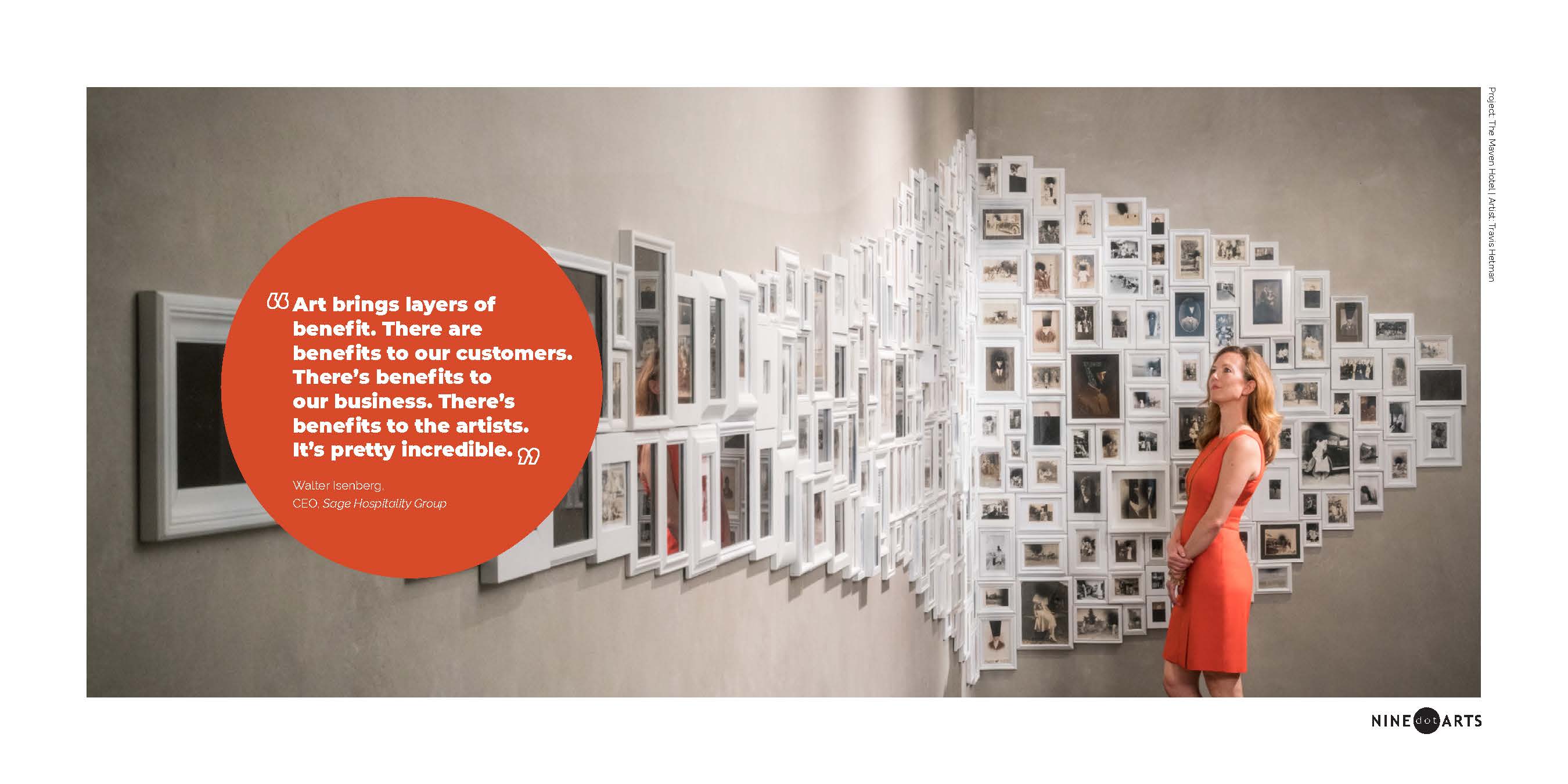Diversity, equity, inclusion, and belonging (DEIB) are critical for helping organizations flourish both internally and among competitors. Cultivating DEIB isn’t just good for business. It’s good for your employees, the community, and society at large. And while there are many ways to foster DEIB in the workplace, one that is often overlooked is art.

The newly released 2021 State of the Art Report from NINE dot ARTS states that nearly 90% of business leaders believe celebrating diversity, equity, and inclusion as part of their projects is good business. But where does one start? Here are three questions that we ask ourselves when working to foster DEIB through meaningful and collaborative art experiences. What are some ways you learn and grow in pursuit of a more just and equitable future for all?
1. Whose voices are at the table?
One of the joys of humanity is that each of us are uniquely our own. This means there’s a whole range of personalities, perspectives, life experiences, and ideas out there, ready to be heard. It is energizing to build connections across differences and to avoid homogeneous thinking — the kind that happens when we only stick to who and what we know. Including a myriad of voices at the table — ranging in expertise, age, race, etc. — helps prevent deficit thinking, while fostering the kind of healthy discussion and idea sharing that leads to authentic art experiences.
One great example of this is Denver’s Clayton Members Club and Hotel, a social club and hotel that inspires opportunity, equity, and inclusivity through an extensive local art collection. Accomplishing this meant including a variety of voices in the project. Through incredible collaboration with a variety of partners, artists from a community organization, RedLine Contemporary Arts Center, were able to display and sell their work at the Clayton Club, keeping 100% of the profits. Altogether, the hotel’s 235-piece collection represents the work of primarily underrepresented and emerging artists, an effort made possible through cross-disciplinary partnerships and diverse voices at the table.
2. What stories and histories are we honoring?
As with any new commercial development or public art endeavor, it is important to understand the history and culture of the place in which you are working. Art offers a meaningful way to honor that history and help others discover it, while making the space feel exciting and new.

Take The Blackstone Hotel in Chicago, a century-old staple of the city and a world-class destination for travelers. After studying the history of the hotel, including the many socialites, celebrities, and politicians who stayed there, we curated a museum-worthy art collection that captures the essence of Chicago’s movers and shakers, both past and present. Through art, we helped tell the story of the guests and patrons who shaped the streets of Chicago, thereby honoring the city’s heritage and the hotel’s historic charm.
3. How are we inviting others to experience the artwork?
Whether a multifamily residential property, office building, or hotel, these are places where people live, work, play, and connect — activities that are undoubtedly influenced by their surroundings. Therefore, when designing an art experience, we have to ask ourselves: What is the social impact of this collection? How can we help people engage with these artworks? How might the artwork support their everyday interactions? We know that not every person will appreciate all the pieces we select, but will it make them stop and think? Will it spark a conversation or idea? More often than not, the answer is yes. And there are so many exciting ways to invite people in.

One way to do this is by thinking BIG. Parking garages, exterior walls, and fences are really just large, urban canvases waiting to be transformed through art. These larger-than-life moments can provide perspective, offering new ways to look at the world while calling attention to your space and beckoning people inside to learn more.
Funny enough, another way to do this is by thinking small. An authentic art experience can have both attention-grabbing pieces and subtle, sometimes hidden “gems.” These art pieces may be styled on a shelf or tucked away in a nook, but when found, they offer people moments of quiet satisfaction and discovery. Maybe it’s a photo of the building’s initial blueprint, or an artifact that pays homage to the community culture. These complementary pieces reward visitors’ curiosity and invite them into a place, a story, an experience.
Inspiring DEIB Through Art

The art of representation requires more than ensuring your company’s art collection is diverse. Rather, it means normalizing equity across the art and business worlds and beyond. It means celebrating differences, honoring history, and championing inclusive and equitable practices that benefit artists, employees, communities, and economies. Fortunately, we have each other to learn from and lean on, and we have art (and artists) to inspire us, connect us, and help us grow toward the world we know we can become.


